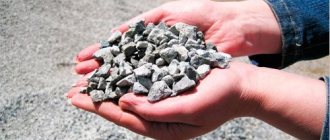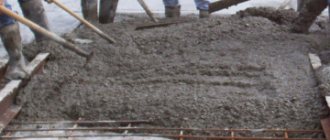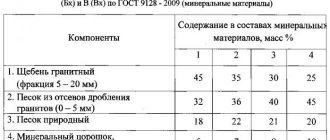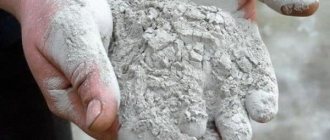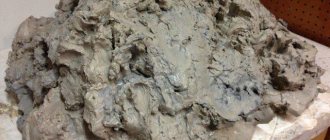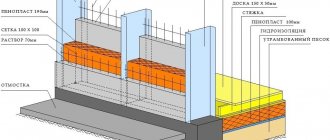When performing construction or finishing work, sand, crushed stone and asphalt are often used as materials for constructing foundations for buildings, road surfaces and engineering structures. In order to complete the assigned tasks on time and meet the allocated funds, in such cases, accurate calculations of how many tons of sand are needed in a cube. This will allow you to control deliveries and determine the consumption of materials at the site.
Sand
It is the most used building material. It is used for preparing reinforced concrete, all mortars, dry mixes, making bases for foundations and roads, filling embankments, sandblasting, decorative finishing of paths, platforms, flower beds, in drainage and filter systems.
The weight and volume of bulk material are related to each other by the formula through density (or specific gravity), expressed in kg/m³ or t/m³:
m = V·ρ, where m is the mass of the material in t, V is the volume in m³, ρ is the density in t/m³.
Using this formula, knowing two quantities, it is easy to determine the third. For example, to calculate how many tons of sand are in a cube, you need to make the following calculations:
Known values: volume - 1 cubic meter, sand density - 1.5 t/m³ (value from a reference book or quality certificate of the material being sold).
We find the required mass of sand: m = V· ρ = 1 m³·1.5 t/m³ = 1.5 t.
To determine how many cubes of sand are in 1 ton, we use the same formula, changing it to find the volume:
V = m: ρ = 1 t: 1.5 t/m³ = 0.67 m³.
The actual density of sand, depending on its size and relative humidity, is from 1.4 to 1.9 t/m³. The exact density value of a particular product can be obtained experimentally by having accurate scales and containers with an easily measured volume, for example, cylinders.
Even more accurate results will be obtained by laboratory analysis, which, in addition to density, will determine other quality indicators - size distribution, humidity, content of clay and other impurities. If there are no opportunities for research, use the reference value established in the region as a standard. For example, in St. Petersburg the value of this density for sand is 1.43 t/m³.
Physical and mechanical properties
Weight and density
The quality of the coating largely depends on the physical and mechanical properties, which are regulated by GOST 9128-97. According to these standards, the density, and therefore the weight of 1 m3 of asphalt concrete, depends on the sand that is used in its composition.
Depending on this, the weight is:
- On quartz sand 2200 kg per cubic meter;
- On slag sand 2350 kg per cubic meter.
The second indicator is higher due to the fact that the mixture on slag sand is more compacted. Of course, the specific gravity of coarse asphalt concrete is different, since it uses crushed stone of a larger fraction. It is very difficult to obtain an exact value, however, the average weight is 2100 kg per cubic meter.
These numbers are important when calculating the required amount of material to perform certain jobs. In addition, weight data may be required when dismantling the road surface, which will allow you to calculate the carrying capacity of the equipment and the number of vehicles for removing the old road surface.
Note! The consumption rates according to which this material is laid depend on the brand of the mixture. This data can be found from SNiP 3.06.06-88, which will help you avoid mistakes when performing calculations and work yourself.
It must be said that in order to increase the roughness of the road surface and, accordingly, better adhesion of car tires to the road, an increased amount of crushed crushed stone is added to the asphalt concrete mixture. Its content can reach 80 percent. Grip is sometimes improved by adding recycled tires to the compound.
The change in composition, of course, affects the material. Therefore, accurate values can only be obtained from the mixture manufacturer.
Material consumption
If you decide to improve the area by making paths from asphalt concrete or covering the site with it, you first need to calculate its consumption. This will allow you to find out the quantity and cost of material to complete the planned work.
The instructions for calculating consumption are extremely simple:
- First of all, you need to measure the area that you plan to cover with asphalt concrete. For example, it is necessary to cover an area of 50 square meters, with a layer thickness of 1 cm.
- To cover one square meter of road you will need 25 kg of mixture, respectively, for 50 meters you will need 25x50 = 1250 kg
- Since 1 m3 contains an average of 2250 kg of asphalt concrete, to cover the site you will need 1250:2250 = 0.55 m3 of asphalt concrete.
It must be said that when using cast asphalt concrete, i.e. mixtures that include polymers and plasticizers, consumption is reduced, since the coating can be used in a thinner layer, resulting in its plasticity.
Advice! When landscaping the area using asphalt concrete pavement, it can be decorated. To do this, colors are usually added to its composition. Another popular way to decorate it is embossing and using colored crushed stone with fractions up to 5 mm in size.
Crushed stone
This is also a widely used building material. It is the most significant component of reinforced concrete. It is used for filling railway embankments, preparing liquid concrete and asphalt concrete, and in the manufacture of road pavement.
Crushed stone has several size fractions - from 5 mm to 100 mm. Depending on the size of the granules, the density of the material changes slightly. Thus, the bulk density of crushed stone of the 5-10 mm fraction is 1.41 t/m³, and the 40-70 mm fraction is only 1.34 t/m³. This can be explained by the fact that coarse crushed stone has more air gaps.
To find out how many tons are contained in one cube of crushed stone, you need, just as in the case of sand, to find out its density - this value in t/m³ will be the answer to the question.
The already known formula will help you determine how many cubes of crushed stone are in 1 ton: V = m: ρ = 1 t: 1.41 t/m³ = 0.71 m³.
Material composition
So, the coating consists of the following ingredients:
- Fine gravel or crushed stone
, which is crushed into crumbs; - Sand
(quartz or slag); - Bitumen
is a resin-like substance.
The natural components of this material provide strength, and bitumen is their binding component. Like all resins, bitumen has a viscous consistency only when heated. Therefore, the mixture is laid only in a heated state.
It should be noted that there are technologies by which it is possible to obtain bitumen that maintains its viscosity up to +5 degrees Celsius. In addition, some modern methods of oil refining make it possible to create liquid bitumen that does not solidify at temperatures down to -30 degrees Celsius.
Note! The technology for laying road surfaces in different countries is approximately the same, but the quality of the road surface depends largely on the composition of the mixture, to which modern components are added that improve its characteristics.
In the photo - small crushed stone
Depending on the content of mineral components in the mixture, it is divided into 3 groups:
As for the size of the fractions, this parameter is regulated by TU-5718.030.01393697-99, which was developed by SoyuzdorNII. In accordance with it, I add crushed stone with a particle size of 10-20 mm to the mixture. This material is used to apply the top layer of the road surface.
It should be noted that there is also coarse-grained asphalt concrete, in which crushed stone is used with fractions up to 40 mm in size. It is also used in road construction. This technology is considered traditional, as a result of which it is used everywhere.
True, depending on the operating conditions of the roadway, polymers and surfactants can be added to the mixture, giving it certain properties. The price of the material largely depends on the additives.
Asphalt
It is extracted in its natural form and is also produced artificially based on petroleum bitumen. Density varies from 1100 kg/m³ for natural fractions to 2450 kg/m³ for heavy asphalt concrete with the highest content of granite crushed stone.
To find out how many tons 1 cubic meter of asphalt weighs, you need to find out the density of compacted asphalt, which is indicated in the product passport by the manufacturing plant.
The answer to the question: how many cubes are in a ton of asphalt - for the heaviest asphalt concrete it will be: V = m: ρ = 1 t: 2.45 t/m³ = 0.41 m³.
In practice, the density of asphalt in the compacted state is determined by drilling a cylindrical sample from the finished road surface, measuring its weight and volume, and calculating the density value using a well-known formula.
Pros and cons of asphalt concrete mixture
A road surface made of asphalt concrete has the following advantages:
- Quiet noise when driving.
- No dust during operation.
- High level of wear resistance.
- No difficulties in maintaining and repairing the road surface.
The main disadvantages of asphalt concrete road surfaces are:
- During operation, the formation of waves, shifts, and cracks is possible.
- With slight moisture the road becomes slippery.
- Lack of water resistance leads to peeling of the surface.
Conclusion
The weight of a material such as asphalt concrete depends primarily on the components that are used in its composition. However, average data can be obtained from reference literature. This information is sufficient to perform the basic necessary calculations when performing various works.
You can get more information on this topic from the video in this article.
How much does 1 cube of asphalt weigh, the weight of 1 m3 of asphalt. The number of kilograms in 1 cubic meter, the number of tons in 1 cubic meter, kg in 1 m3. Asphalt bulk density and specific gravity.
What do we want to learn today? How much does 1 cube of asphalt weigh, the weight of 1 m3 of asphalt?
No problem, you can find out the number of kilograms or the number of tons at once, the mass (weight of one cubic meter, weight of one cube, weight of one cubic meter, weight of 1 m3) is indicated in Table 1. If anyone is interested, you can skim the small text below and read some clarifications.
How is the amount of substance, material, liquid or gas we need measured? Except for those cases when it is possible to reduce the calculation of the required quantity to the counting of goods, products, elements in pieces (piece counting), it is easiest for us to determine the required quantity based on volume and weight (mass). In everyday life, the most common unit of volume measurement for us is 1 liter. However, the number of liters suitable for household calculations is not always an applicable way to determine the volume for business activities. In addition, liters in our country have not become a generally accepted “production” and trade unit for measuring volume. One cubic meter, or in its abbreviated version - one cube, turned out to be a fairly convenient and popular unit of volume for practical use. We are accustomed to measuring almost all substances, liquids, materials and even gases in cubic meters. It's really convenient. After all, their costs, prices, rates, consumption rates, tariffs, supply contracts are almost always tied to cubic meters (cubes), and much less often to liters. No less important for practical activities is knowledge of not only the volume, but also the weight (mass) of the substance occupying this volume: in this case we are talking about how much 1 cubic meter weighs (1 cubic meter, 1 cubic meter, 1 m3). Knowing mass and volume gives us a fairly complete idea of quantity. Site visitors, when asking how much 1 cube weighs, often indicate specific units of mass in which they would like to know the answer to the question. As we noticed, most often they want to know the weight of 1 cube (1 cubic meter, 1 cubic meter, 1 m3) in kilograms (kg) or tons (t). Essentially, you need kg/m3 or t/m3. These are closely related units that define quantity. In principle, a fairly simple independent conversion of weight (mass) from tons to kilograms and vice versa is possible: from kilograms to tons. However, as practice has shown, for most site visitors a more convenient option would be to immediately find out how many kilograms 1 cubic (1 m3) of asphalt weighs or how many tons 1 cubic (1 m3) of asphalt weighs
, without converting kilograms into tons or vice versa - the number of tons in kilograms per cubic meter (one cubic meter, one cube, one m3).
Therefore, in Table 1 we indicated how much 1 cubic meter (1 cubic meter, 1 cubic meter) weighs in kilograms (kg) and tons (t). Choose the table column that you need yourself. By the way, when we ask how much 1 cubic meter (1 m3) weighs, we mean the number of kilograms or the number of tons. However, from a physical point of view, we are interested in density or specific gravity. The mass of a unit volume or the amount of substance contained in a unit volume is bulk density or specific gravity. In this case, the bulk density and specific gravity of asphalt. Density and specific gravity in physics are usually measured not in kg/m3 or tons/m3, but in grams per cubic centimeter: g/cm3. Therefore, in Table 1, the specific gravity and density (synonyms) are indicated in grams per cubic centimeter (g/cm3). How much does 1 cubic meter of asphalt concrete mixture, cold coarse-grained asphalt, weigh, the weight of 1 m3 of asphalt concrete mixture of crushed stone and bitumen.
The number of kilograms in 1 cubic meter of crushed stone-mastic asphalt concrete, the number of tons in 1 cubic meter of road-building material ShchMA from crushed stone and bituminous binder, kg in 1 m3 of asphalt concrete (crushed stone-mastic asphalt). Bulk density of asphalt concrete mixture specific gravity of cold ShchMA asphalt. What do we want to learn today? How much does 1 cubic meter of asphalt concrete mixture, cold asphalt, weigh, the weight of 1 m3 of ShchMA asphalt concrete mixture, crushed stone-mastic asphalt concrete made from crushed stone and bituminous binder material? No problem, you can find out the number of kilograms or the number of tons at once, the mass of crushed stone-mastic asphalt (the weight of one cubic meter of road surface made of coarse-grained asphalt, the weight of one cube of asphalt concrete, the weight of one cubic meter of a mixture of crushed stone and bitumen, the weight of 1 m3 of crushed stone-mastic asphalt concrete) are indicated in table 1. If anyone is interested, you can skim the small text below and read some explanations. How is the amount of substance, material, liquid or gas we need measured? Except for those cases when it is possible to reduce the calculation of the required quantity to the counting of goods, products, elements in pieces (piece counting), it is easiest for us to determine the required quantity based on volume and weight (mass). In everyday life, the most common unit of volume measurement for us is 1 liter. However, the number of liters suitable for household calculations is not always an applicable way to determine the volume for business activities. In addition, liters in our country have not become a generally accepted “production” and trade unit for measuring volume. One cubic meter, or in its abbreviated version - one cube, turned out to be a fairly convenient and popular unit of volume for practical use. We are accustomed to measuring almost all substances, liquids, materials and even gases in cubic meters. It's really convenient. After all, their costs, prices, rates, consumption rates, tariffs, supply contracts are almost always tied to cubic meters (cubes), and much less often to liters. No less important for practical activities is knowledge of not only the volume, but also the weight (mass) of the substance occupying this volume: in this case we are talking about how much 1 cubic meter of cold asphalt weighs (1 cubic meter of asphalt concrete - road material, 1 cubic meter of crushed stone-mastic asphalt concrete, 1 m3 ShchMA). Knowing the mass and volume gives us a fairly complete idea of the amount of crushed stone-mastic asphalt. Site visitors, when asking how much 1 cubic meter of road building material weighs, often indicate specific units of mass in which they would like to know the answer to the question. As we noticed, most often they want to know the weight of 1 cube of cold asphalt (1 cubic meter of road surface, 1 cubic meter of asphalt concrete, 1 m3 of crushed stone-mastic asphalt concrete) in kilograms (kg) or tons (t). Essentially, you need kg/m3 or t/m3. These are closely related units that determine the amount of a mixture of crushed stone and bitumen (BMA). In principle, a fairly simple independent recalculation of the weight (mass) of the composition of crushed stone and bituminous binder material from tons to kilograms and vice versa is possible: from kilograms to tons. However, as practice has shown, for most site visitors a more convenient option would be to immediately find out how many kilograms 1 cubic meter (1 m3) of ShchMA asphalt concrete mixture weighs or how many tons 1 cubic meter (1 m3) of asphalt concrete mixture for road surfaces weighs, without converting kilograms into tons or vice versa - the number of tons in kilograms per cubic meter (one cubic meter, one cubic meter, one m3). Therefore, in Table 1 we indicated how much 1 cubic meter of cold asphalt weighs (1 cubic meter of road-building material, 1 cubic meter of crushed stone-mastic asphalt concrete) in kilograms (kg) and in tons (t). Choose the table column that you need yourself. By the way, when we ask how much 1 cubic meter (1 m3) of asphalt concrete composition weighs, we mean the number of kilograms of a mixture of crushed stone and bitumen or the number of tons of road material ShchMA. However, from a physical point of view, we are interested in the density of crushed stone-mastic asphalt or the specific gravity of coarse-grained asphalt. The mass of a unit volume or the amount of substance placed in a unit volume is the bulk density of asphalt concrete or the specific gravity of crushed stone-mastic asphalt concrete. In this case, the bulk density of crushed stone-mastic asphalt concrete and the specific gravity of the asphalt concrete mixture.
The bulk density of road-building material and the specific gravity of the road surface in physics are usually measured not in kg/m3 or in tons/m3, but in grams per cubic centimeter: g/cm3. Therefore, in Table 1, the specific gravity of asphalt concrete and the density of road surfaces made of crushed stone-mastic asphalt (synonyms) are indicated in grams per cubic centimeter (g/cm3)
Table 1. How much does 1 cubic meter of asphalt concrete mixture weigh, coarse-grained cold asphalt, the weight of 1 m3 of asphalt concrete mixture of crushed stone and bitumen (SMA). Bulk density of road building material and specific gravity of road surface (crushed stone-mastic asphalt) in g/cm3. How many kilograms are in a cube of asphalt concrete, tons in 1 cubic meter of cold asphalt, kg in 1 cubic meter of a mixture of crushed stone and bitumen, tons in 1 m3 of crushed stone-mastic asphalt concrete.
Today, the transport network is one of the indicators of the level of economic development. High-quality road surfaces help increase freight traffic and reduce transportation costs, and in urban infrastructure it increases the capacity of congested streets. Asphalt has been used as road pavement for over a hundred years.
Density calculation: table
The density of asphalt is its main characteristic.
>
Did you like the article? Share with your friends!
137
Body weight gas 53 dump truck
Vertical vacuum cleaner in dns
Popular posts
Storage water heater 80 liters stainless steel
Vibrating plate or vibrating rammer, which is better?
Neolith porcelain tiles official website
Geranium apple blossom photo
Amira CJSC official website
Electric built-in hotpoint oven Ariston instructions
